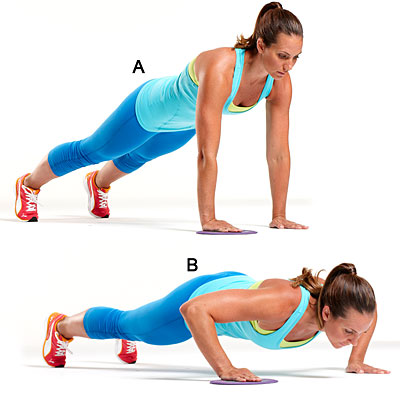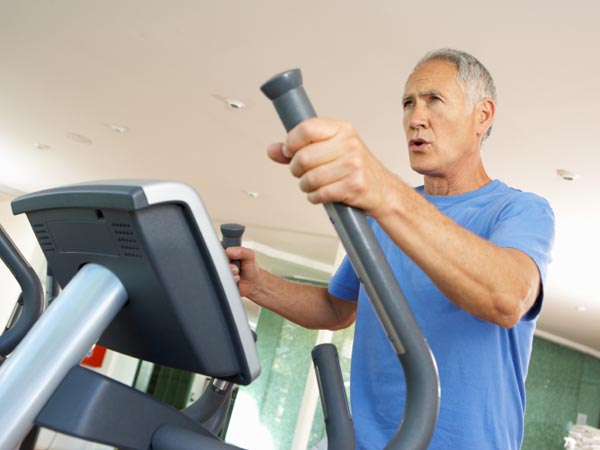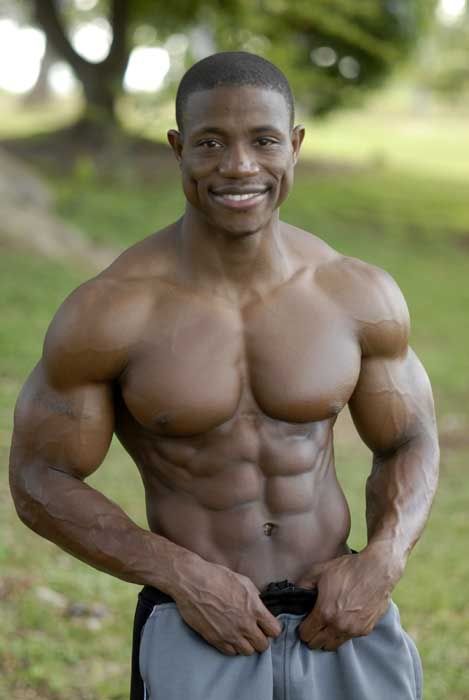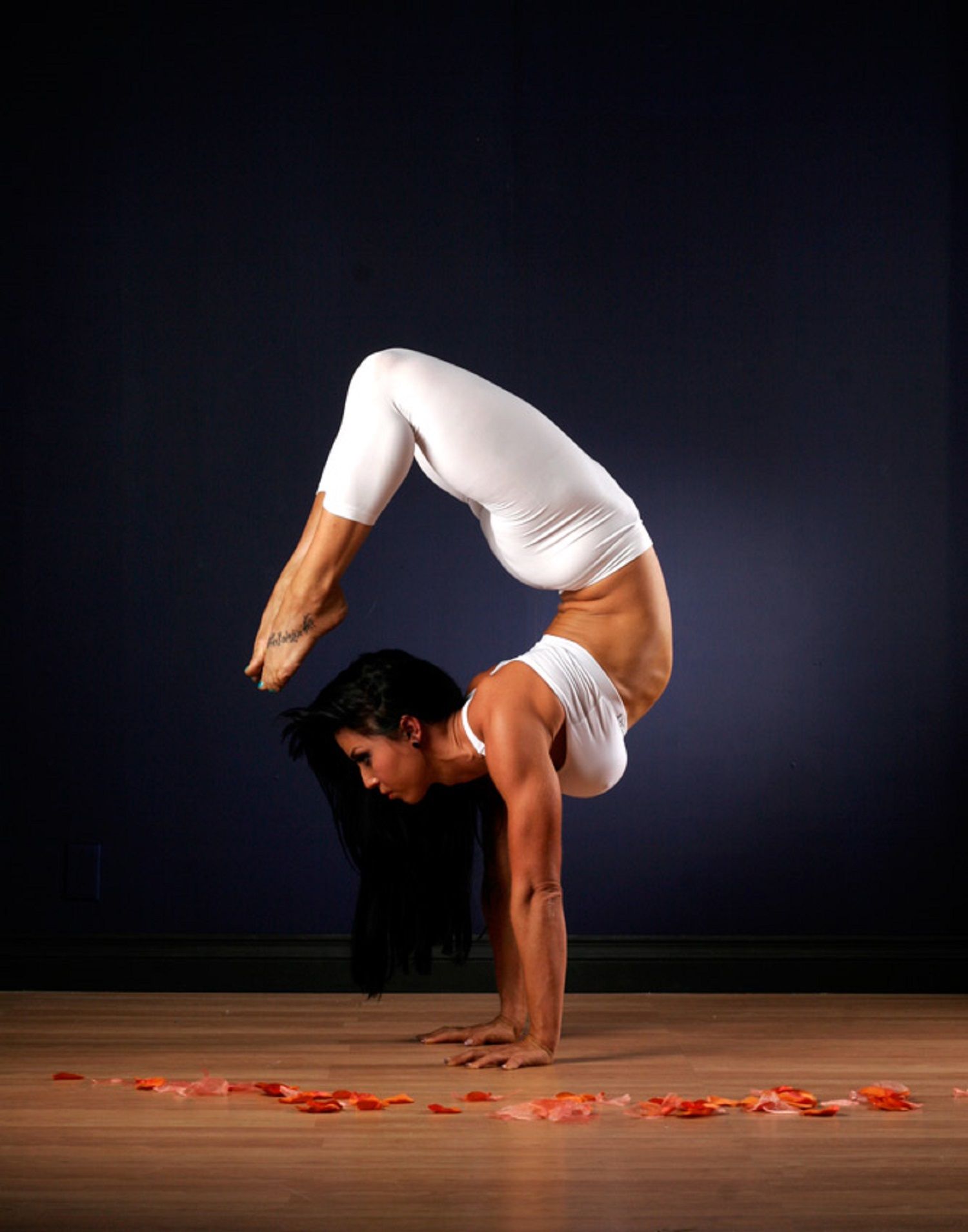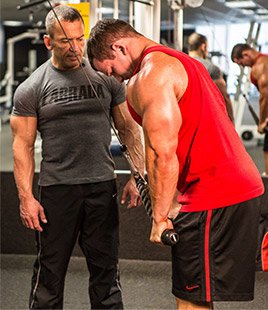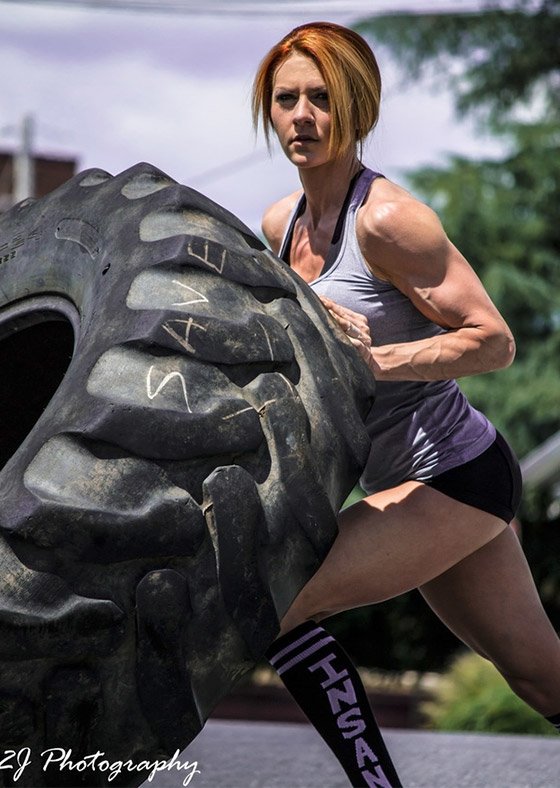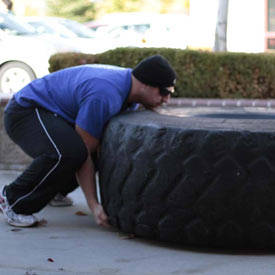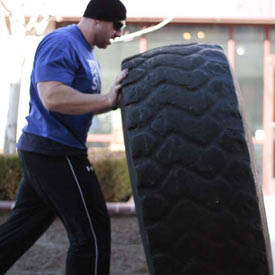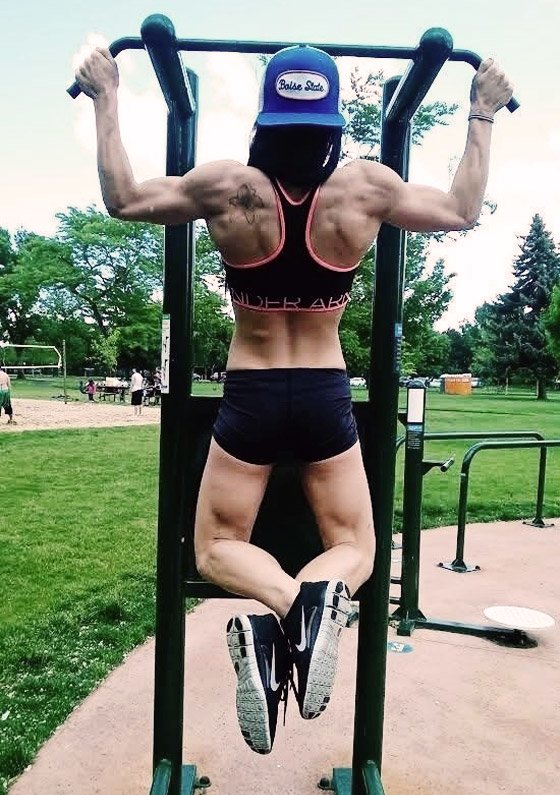Chair Dips: dips are another common exercise that help develop the triceps, while also working the pectorals and major shoulder muscles. All you need to perform this exercise is an exercise bench or step, though a kitchen chair will also work just fine.
To perform a basic bench dip:
- Sit up straight on the edge of the bench or chair, extending your legs in front of you and planting you feet firmly on the ground.
- Firmly grip the edge of the bench or chair, with your fingers facing downwards. Slowly slide your body off the bench, without moving your legs.
- Slowly lower your body towards the floor, keeping your back straight, until your arms from a 90 degree angle.
- Push your body back to the original starting position. You have now completed one repetition.
Variations: To increase the difficulty of the bench dip, try propping your feet up on a second exercise bench or chair.
Old school arm circles. Arm circles are a great, easy exercise that can be performed anytime, anywhere, making them a great exercise option for beginners. Arm circles help to tone both your biceps and triceps, while also strengthening the back and shoulders.
To do arm circles:
- Stand with your feet about a shoulder width apart and extend your arms straight out to the sides, so they’re in line with your shoulders.
- Begin rotating your arms forward in small, circular motions, without moving your wrists or elbows.
- After about 20 circles, change direction and begin rotating your arms backwards.
Variations: To increase the intensity of the arm circles, you can rotate your arms faster or use hand weights that are light enough to allow you to do 8-10 rotations.
Targeted bicep curls. Bicep curls are one of the most basic weight lifting exercises, which help you to build arm strength and look good in short sleeves. Bicep curls target the three bicep muscles which control the flexing of your elbow.
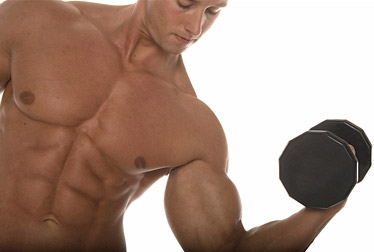
To do bicep curls, you will need a set of dumbbell that weigh between 5 and 15 pounds each.
- Hold a dumbbell in each hand and stand up straight with your feet hip width apart.
- Let your arms hang relaxed at your sides, with your palms facing forward.
- With your elbows held at your hip bones, slowly raise both weights until your forearms touch your chest.
- Slowly lower the weights back into the starting position, maintaining tension in your biceps. Make an effort to maintain good posture at all times, with your back straight and stomach pulled in.
Variations: If you are performing this exercise at your local gym, look for an arm-curl machine which will target the exact same muscles as the dumbbells. If you’re doing the exercises at home for the first time, you can also use a standard 15 oz can of beans or peas to perform this exercise.




